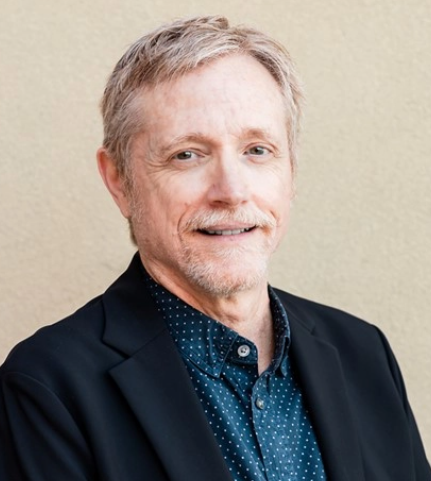When it comes to treating opioid addiction, one of the most common misconceptions we encounter is the belief that medication-assisted treatment (MAT) is merely “trading one drug for another.” This statement, often rooted in misunderstanding, overshadows the significant benefits that medications like methadone and buprenorphine provide to those suffering from opioid use disorder (OUD).
The truth is, by the time someone seeks help from a clinic like ours, they have often experienced unimaginable hardships—broken relationships, lost jobs, and the daily battle against withdrawal symptoms. These individuals are not simply looking to replace one substance with another; they are fighting for their lives. When combined with counseling and comprehensive care, MAT allows them to regain stability, rebuild their lives, and ultimately thrive.
In this article, we’ll explore the myths surrounding MAT, highlight its transformative power, and address concerns about whether treatments like methadone and buprenorphine truly help people recover.
Myth Busting: Medication for Opioid Use Disorder (MOUD)
One of the most persistent myths surrounding medication-assisted treatment is that it’s just “trading one drug for another.” This misconception, often rooted in a lack of understanding, unfairly stigmatizes the use of life-saving medications like methadone and buprenorphine. People commonly assume that patients on MOUD are merely replacing one addiction with another or are even getting “high” from the medications themselves.
However, the reality is far different. The medications used in MAT don’t make patients feel “high” when they are taken at the appropriate dose. Instead, these treatments work by stabilizing the patient, allowing them to feel normal, not sedated. According to the Substance Abuse and Mental Health Services Administration (SAMHSA), people on MOUD at the proper dose can function just like anyone else.
As stated by SAMHSA, “When provided at the appropriate dose to a person stabilized on methadone or buprenorphine, these medications have no adverse effects on intelligence, mental capability, physical functioning, or employability. Research studies demonstrate that MAT patients are comparable to non-patients in reaction time and their ability to learn, focus, and make complex judgments. MAT patients do well in various work settings, including professional positions, service occupations, and skilled, technical, and support jobs.”
Research shows that MAT patients can thrive in professional positions, from lawyers and engineers to truck drivers and teachers. In short, when prescribed and monitored correctly, MOUD allows individuals to live fully functional and productive lives. By debunking these myths, it becomes clear that MOUD is not about substituting one drug for another but is a scientifically backed method that helps individuals break free from the cycle of opioid addiction.
The Real Impact of Opioid Addiction
Opioid addiction can be devastating, affecting nearly every aspect of a person’s life. By the time someone seeks help, they have often endured immense hardships. Addiction doesn’t just harm the individual—it takes a toll on families, careers, and personal well-being. Those who come to treatment programs like ours are often at their breaking point. They may have lost jobs, housing, custody of their children, and even the support of their loved ones. Every day becomes a desperate struggle to avoid the crippling effects of withdrawal.
The constant need to obtain opioids pushes many to act in ways they would never have imagined—stealing, selling drugs, or even selling themselves to avoid the agony of withdrawal symptoms. People in the grip of addiction often find themselves trapped, unable to imagine a way out.
For individuals in this situation, medication for opioid use disorder is not a luxury; it’s a lifeline. By reducing the physiological cravings and withdrawal symptoms, MOUD offers them the stability they need to begin healing and rebuilding. MOUD treats more than addiction— It helps people reclaim their lives, relationships, and dignity.
As patients begin their journey on MOUD, their day-to-day struggles with opioid use become manageable. They can focus on restoring what was lost—finding stable employment, reconnecting with family, and securing a safe place to live. These physical, mental, and social health improvements are not just theoretical; the data shows rapid progress in areas like employment and housing among MOUD patients.
How MOUD Helps People Rebuild Their Lives
Once someone begins medication for opioid use disorder, the transformation can be remarkable. With the help of medications like methadone and buprenorphine, individuals lose the daily need to find and use opioids. The relief from withdrawal and cravings allows patients to focus on rebuilding their lives and regaining control over their future.
At Community Medical Services, we see firsthand the positive changes that occur when someone starts MOUD. Patients often experience rapid improvements in their physical health, mental well-being, and relationships. Our data shows that many patients secure employment, obtain stable housing, and reconnect with their families soon after starting treatment. Most patients find jobs and stable living situations within their first year on MOUD. This newfound stability has a ripple effect, leading to better physical and mental health, including improvements in conditions like anxiety and depression.
Moreover, patients on MOUD are not just surviving—they are thriving. Contrary to the misconception that these medications “maintain” addiction, MOUD provides individuals with the tools to overcome their addiction and rebuild their lives. With their basic needs met and their health improving, patients can begin to pursue their goals and reconnect with their communities.
Medication is only part of the solution. At our clinics, patients receive counseling and support services that empower them to set and achieve personal goals. This holistic approach allows patients to not only address their addiction but also the underlying issues that contributed to it. For those who once saw no way out, MOUD provides a path toward recovery, stability, and hope for the future.
Addressing the Concept of “Enabling”
One common concern about medication-assisted treatment is that it might “enable” addiction rather than help individuals overcome it. This fear often stems from misunderstanding what enabling truly means and how it differs from providing compassionate, effective care.
Enabling can be defined as any action that decreases someone’s motivation to change while providing no significant benefit. In contrast, treatments like MOUD do the opposite—they increase motivation for change and provide substantial benefits to individuals battling opioid use disorder. Data shows that patients on MOUD are more likely to make significant strides toward recovery, including improvements in employment, housing, and relationships
Critics sometimes argue that MAT is “just keeping people alive” rather than addressing the root of the addiction. But keeping people alive is far from enabling—it’s a critical first step in recovery. Without life, there is no opportunity for recovery. The primary goal of MOUD is to prevent overdose deaths, which it does by reducing the risk by 70% or more.
In reality, MOUD empowers people to regain control of their lives. It helps them move away from the dangerous cycle of opioid use and toward a healthier, more stable future. By giving individuals the tools to manage their addiction, MOUD fosters recovery rather than perpetuating dependence. When we consider the two criteria for enabling—decreasing motivation for change and failing to provide significant benefit—it’s clear that MOUD does not meet either. Instead, it encourages positive life changes and offers life-saving benefits.
The Difference Between Methadone and Buprenorphine
A common misconception surrounding MAT is that there is a significant difference between patients who take methadone and those who take buprenorphine. Some people believe that while patients on buprenorphine seem “normal,” those on methadone are often perceived as being “stoned” or sedated. This myth persists despite the reality that, when taken at the appropriate dose, both medications allow patients to function normally and without any noticeable impairment
Both buprenorphine and methadone stabilize the brain’s response to opioids, preventing withdrawal symptoms and reducing cravings. Patients on a stable dose of either medication do not experience the highs and lows associated with opioid addiction. They are not sedated, and they are not impaired. Instead, they can lead regular, productive lives. As the Substance Abuse and Mental Health Services Administration (SAMHSA) states, individuals on MOUD at the appropriate dose show no adverse effects on their intelligence, physical functioning, or employability. Whether a patient is on methadone or buprenorphine, they can thrive in their personal and professional lives.
The reality is that you cannot “tell the difference” between someone on methadone versus buprenorphine if they are on the correct dose. There is no visible marker of their treatment unless they disclose it themselves. The assumption that methadone patients appear sedated is simply incorrect, and such misconceptions only further stigmatize people seeking treatment.
Sterile Supply Programs: Harm Reduction or Enabling?
Another common criticism often aimed at harm reduction strategies, such as Sterile Supply Programs (SSPs), is that they “enable” continued drug use. SSPs, also known as needle exchange programs, provide sterile syringes to individuals who inject drugs to reduce the risk of infections such as HIV and hepatitis. While some view these programs as encouraging drug use, the reality is that they play a crucial role in public health and harm reduction.
SSPs offer significant benefits. Providing clean syringes decreases the spread of infectious diseases often transmitted through shared or contaminated needles. Many studies have shown that SSPs lower HIV and hepatitis infection rates and reduce other complications related to intravenous drug use. These health benefits alone demonstrate that SSPs are not enabling. Instead, they are saving lives by preventing severe, often fatal infections.
Additionally, the concern that SSPs decrease a person’s motivation to seek treatment is unfounded. Research has demonstrated that people who access SSPs are more likely to engage with healthcare services and pursue treatment for their addiction. Each visit to an SSP provides an opportunity for healthcare professionals to connect with individuals and offer support, education, and pathways to treatment when they are ready. People who use SSPs are significantly more likely to enter addiction treatment programs than those who do not.
Contrary to the myth that SSPs encourage further drug use, they provide a crucial safety net for people who are not yet ready to stop using drugs but want to minimize the risks associated with their current behaviors. Each interaction with an SSP opens the door for engagement and can ultimately help individuals move toward recovery.
Examples or True Enabling?
While treatments like medication-assisted treatment and sterile supply programs do not meet the definition of enabling, some behaviors and actions can unintentionally enable substance use. Understanding what constitutes enabling can help family members, friends, and even healthcare professionals avoid actions that might hinder a person’s recovery journey.
Enabling occurs when an action decreases a person’s motivation to change while providing no significant benefit. One example of enabling might involve a family member who, out of concern, cleans up after someone struggling with alcohol addiction after they pass out intoxicated. If the person wakes up in a clean bed with no memory of the events, they may fail to grasp the consequences of their behavior. In this case, the family member’s well-intentioned actions could reduce the person’s motivation to change, as they do not face their addiction’s full impact.
There are, however, more complex situations where the line between helping and enabling becomes blurred. For instance, if a family member with severe alcohol use disorder is housebound and in danger of life-threatening withdrawal symptoms, continuing to provide alcohol in small amounts might be necessary to prevent serious health complications. In this case, providing alcohol could offer a significant benefit by preventing a medical emergency, even though it might seem like enabling on the surface.
While opioid withdrawal can be highly uncomfortable, it is not typically life-threatening. If a family member were to provide illicit opioids to a loved one to ease withdrawal symptoms, this would likely be considered enabling. This action offers no real health benefit and may reduce the person’s motivation to seek proper treatment.
It’s important to remember that every situation is different. What may be enabling in one case might not be in another. The key is to assess whether your actions are helping the person move towards recovery or allowing them to continue their substance use without addressing the need for change.
Treatment at Community Medical Services: Not “Just Substituting One Drug for Another”
At Community Medical Services, we treat over 20,000 patients every day using medication-assisted treatment (MAT). Each of these individuals receives medication and access to counseling, medical care, case management, and nursing services. The idea that MAT is simply “trading one drug for another” is not only incorrect, but it undermines the critical, life-saving work that helps people recover from opioid addiction.
The risk of dying from an untreated opioid addiction is high—approximately 4% per year. MAT reduces the risk of overdose deaths by 70% or more, which means we are saving lives every single day. In fact, by treating our patients with methadone or buprenorphine, we are preventing more than 500 deaths each year and saving 1.5 lives every day.
But it’s not just about survival. Our patients are thriving. Of those who come to us unemployed, 85% find employment within their first year of treatment. If they were without stable housing, 95% secure a place to live. These numbers reflect the profound impact MAT has on the lives of those who are willing to seek help and stay in treatment.
The notion that we’re “just substituting one drug for another” diminishes the transformative power of MAT. Instead of perpetuating dependence, we empower our patients to rebuild their lives, restore their health, and reconnect with their families. Our mission is clear: to keep people alive and help them thrive. If you or a loved one needs support, contact the compassionate professionals at Community Medical Services today.









